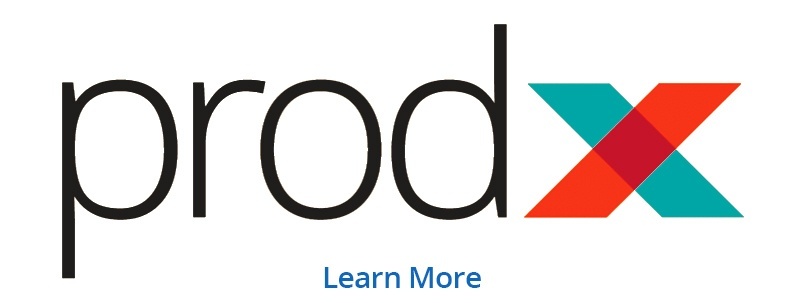In the last installment of our series on e-commerce content strategy we discussed the value of unique product content, the cornerstone of any content tool kit and an ideal way to begin solidifying your content strategy. But a strategy isn't just one idea – instead, you need a suite of content that works together to achieve optimal conversion rates. So what's next? It's time to think about category content.
What is category content?
Category content helps provide context and get eyes on your e-commerce assortment. An easy way to explain is to compare category content with a product description page, or PDP. The PDP explains the features and benefits of an individual product in great detail, allowing your customers to make an informed purchase. Category content takes a step back from individual items, instead creating an overview of one specific batch of products or services, also called a category or subcategory.
Create organized product information
Your website taxonomy determines a hierarchy for organizing items in ways that customers can easily understand and navigate. For example, if I sell a large assortment of cosmetic products, I may have categories for moisturizers, toners, masks and cleansers, then break down moisturizers further into subcategories for normal, oily, combination, dry and sensitive skin. Category content provides engaging, informative lifestyle copy on each of these pages that welcomes shoppers to your offerings, breaks down what's available and why it matters and reflects the voice they’ll see on your PDPs and other content areas. This style of content tends to be longer and more in-depth than a PDP, yet still concise, easy to understand and compelling.
Polish things up
Category content provides another opportunity to boost your SEO ratings in two specific ways. First, you’re able to include keywords and key phrases that shoppers are certain to be searching for. If we return to my skincare example, I’d want to pepper my content with terms like “best moisturizer”, “lotions”, “dry skin” and other terms that searchers are likely to plug into Google. But category content isn’t about keyword stuffing. Instead, the goal is to incorporate these terms organically in longer form copy that brings additional unique content to your pages. And, as you know, search engines prefer unique content at every level of your site. Beyond the SEO value, including category content adds polish to your website, greeting customers in the voice that defines your brand and reinforces that identity on each step of the shopping journey.
Create a snapshot of features
Category content also provides a great opportunity to inform and educate. While some shoppers come to your site knowing exactly what they want and check out immediately, this is not the typical online shopping experience. Instead, many customers desire additional information before committing to a purchase. While not as in-depth as a buying guide (a content tool we’ll discuss next time), category content provides a snapshot of the top features of a product type. Including category content gives you an opportunity to help shoppers understand which products provide the solutions they seek and how the items in question fit into the context of their needs – it answers questions like “which of these products solves my problem?” and “what can I accomplish with this item?” Additionally, it’s likely that your assortment is broad and diverse. Category content can shed light on all you have to offer and help direct shoppers to the categories and subcategories that are best suited to their interests.
Influence up-selling
You’ll also create important cross-selling and up-selling opportunities by utilizing category content. Shoppers often set out to buy just one item or a few things on a list, but the goal is to get more products in carts and boost the total value of each completed order by guiding patrons to offerings they may not have originally been motivated to purchase. Category content enables you to embed links in the copy that draw shoppers to related categories and subcategories, encouraging them to view additional products and alternative options and making transitions between assortments intuitive and easy. Rather than counting on sales driven by initial interest, online retailers who use category content actively direct consumers to the products and services they might not yet realize they want and need.
Start with your website taxonomy
The most effective way to get started with category content is to take a good look at your website taxonomy. Is it efficient? Is it intuitive? If so, you can proceed. If not, take the time to make some revisions to get the most out of your efforts. Next, determine how your content will take shape. Category content should reflect the overall tone of your product description pages, but you can also take it as an opportunity to show more personality and clearly express your brand identity. Determine the right balance between creativity and clarity, friendliness and formality to ensure that you’re approaching customers with a voice that resonates with them. And last but not least, give some thought to where you’ll get started. Which part of your assortment could benefit from an immediate intervention?
Delegate Roles
Will you create this content yourself, or rely on an outside content provider? To make this decision, it’s crucial to assess the time and talent resources at your disposal. You may find that an in-house team has the best handle on your assortment and can speak about it with authority and passion. However, keep in mind that you’re likely to spend more time crafting this type of content, since it is more expansive than product content. You may also benefit from a fresh perspective that can see your offerings with new eyes and help refine your brand’s voice overall.
Next time we’ll focus on buying guides and how they fit into your e-commerce tool kit. Until then, please share your thoughts and questions on category content in the comments, and visit us on LinkedIn and Instagram to see what we’ve been up to lately.
Data integrity, time to market and increased conversions are vital to all e-commerce retailers. Our product data management and unique content creation program ensures consistent product names, robust product descriptions, complete and accurate product attributes and an array of digital assets are at your disposal, providing time to market and quality improvements that will outpace your fiercest competition. Contact our team and get started with Virtucom ProdX today






